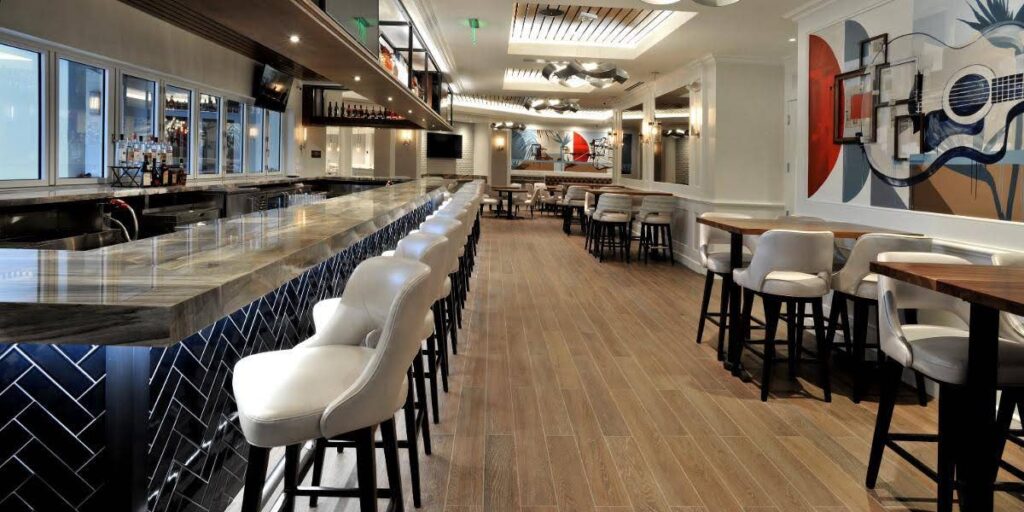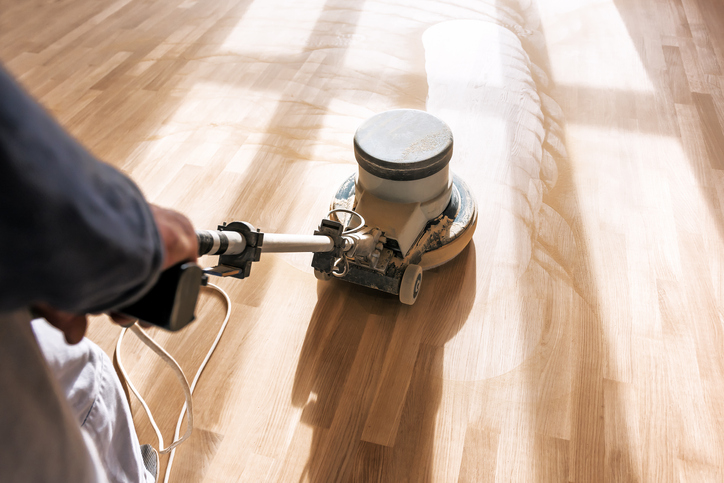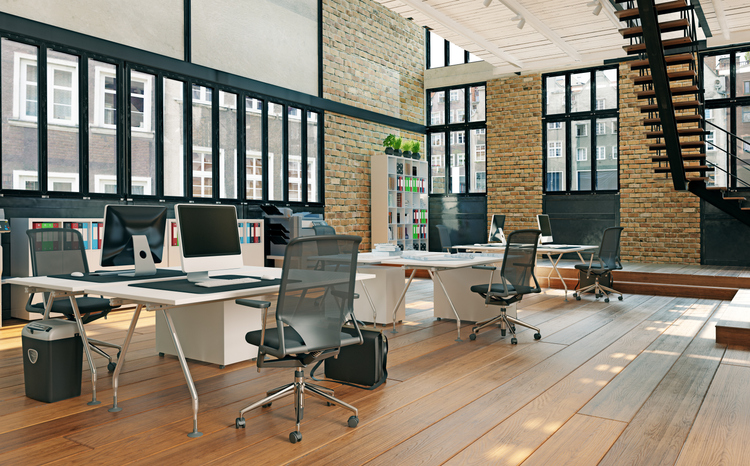When considering installing hardwood floors, one of the most common questions that come to mind is, “how long does it take to install hardwood floors?” Whether you’re a commercial property owner, developer, business, contractor, or resident in South Florida, understanding the timeline for hardwood floor installation is crucial. In this comprehensive guide, we’ll delve into the intricacies of hardwood floor installation timelines, what factors affect the duration, how long hardwood floors last, and what to expect throughout the process.

So, How Long Does it Take to Install Hardwood Floors?
The installation of hardwood floors typically involves three main phases: pre-installation preparation, the installation process itself, and sanding and finishing. Pre-installation can range from a few hours to several days, depending on the condition of the existing floor and the need for subfloor preparation. The actual installation of hardwood planks, which includes laying down the planks, custom cuts, and securing them, can take anywhere from one to three days for a typical residential room.
Finally, sanding and applying finish coats require an additional one to two days. Factors affecting the overall timeline include the size of the area, the type of hardwood, subfloor condition, customizations, and the inclusion of accessories and trim work. Consequently, the entire timeline of installing hardwood floors can vary significantly but generally spans from several days to a week or more, depending on these variables.
Understanding the Timeline of Installing Hardwood Flooring
Installing hardwood floors is a meticulous process that entails several critical steps. Understanding each phase of the installation timeline is essential for ensuring a successful outcome:
1. Pre-installation Preparation
The journey to beautiful hardwood floors begins with thorough pre-installation preparation. This phase involves several key tasks aimed at setting the stage for a flawless installation:
- Removing Existing Flooring: Whether it’s carpet, tile, or laminate, existing flooring must be removed to create a clean slate for the new hardwood. This process can vary in complexity depending on the type of flooring being replaced and the condition of the subfloor beneath it.
- Subfloor Inspection and Preparation: Once the old flooring is removed, the subfloor undergoes a meticulous inspection. Any imperfections, such as dips, bumps, or unevenness, are addressed to ensure a level surface for the hardwood installation. This may involve leveling compounds or subfloor repairs, which can add time to the overall timeline.
- Acclimating Hardwood Planks: Hardwood flooring is a natural material that can expand or contract with changes in temperature and humidity. To prevent issues such as warping or buckling after installation, hardwood planks need to acclimate to the environment where they will be installed. This typically involves storing the planks in the installation area for a specified period, allowing them to adjust to the ambient conditions.
Depending on the size of the area and the condition of the existing floor, pre-installation preparation can range from a few hours to several days.
2. Installation Process
With the groundwork laid during the preparation phase, it’s time for the exciting part: installing the hardwood flooring. The installation process involves several intricate steps to ensure a seamless and visually stunning result:
- Laying Down Hardwood Planks: Skilled installers meticulously lay down each hardwood plank according to the predetermined pattern, whether it’s a classic straight layout, herringbone, or intricate parquet design. Attention to detail is crucial during this phase to achieve a flawless finish.
- Custom Cuts and Fitting: Hardwood installation often requires custom cuts to fit around obstacles such as doorways, corners, or architectural features. Installers use precision tools to ensure a perfect fit, maintaining the integrity of the design while accommodating the room’s layout.
- Securing the Planks: Once the hardwood planks are in place, they are securely fastened to the subfloor using techniques such as nailing, stapling, or gluing. This ensures stability and longevity for the finished floor.
The duration of the installation process can vary depending on factors such as the complexity of the installation, the type of hardwood chosen, and the size of the area. On average, installation for a typical residential room can take anywhere from one to three days.
3. Sanding and Finishing
After the hardwood planks are installed, the journey is not yet complete. The final phase of the installation process involves sanding and finishing the hardwood to perfection:
- Sanding: To achieve a smooth and level surface, the hardwood planks undergo sanding using specialized equipment. This process helps to remove any imperfections, scratches, or unevenness, leaving behind a pristine surface ready for finishing.
- Applying Finish Coats: Once sanded, multiple coats of finish are applied to the hardwood to protect it from wear and tear and enhance its natural beauty. The type of finish chosen, whether it’s oil-based, water-based, or a combination thereof, can impact both the appearance and durability of the final floor.
Sanding and finishing typically require an additional one to two days, depending on the type of finish used and the size of the area being treated.

Factors Affecting Hardwood Flooring Installation Time
The timeline for hardwood floor installation can vary significantly based on several key factors. Understanding these factors is crucial for accurately estimating the duration of the project and planning accordingly.
1. Size of the Area
The size of the installation area is perhaps the most obvious factor influencing installation time. Larger spaces naturally require more time to complete than smaller ones. According to industry standards, a team of professional installers can typically cover around 1,000 square feet of flooring per day. However, this rate can vary based on factors such as the layout of the space and the complexity of the installation.
For example, a recent study published by the National Wood Flooring Association (NWFA) found that the average installation rate for hardwood flooring ranged from 500 to 1,000 square feet per day, depending on factors such as the installer’s experience level and the type of hardwood being installed. Therefore, it’s essential to consider the size of the area when estimating the overall duration of the project.
2. Type of Hardwood
The type of hardwood selected for the installation can also impact the timeline. Some hardwood varieties are more challenging to install than others due to factors such as thickness, hardness, and composition. For instance, exotic hardwood species like Brazilian cherry or tigerwood may require more time and expertise to install compared to domestic species like oak or maple.
According to a report by Floor Covering News, certain hardwood species, such as engineered hardwood, can be installed more quickly due to their click-lock or glue-down installation methods. Conversely, solid hardwood flooring typically requires more time for acclimation, installation, and finishing, as noted by the NWFA.
3. Subfloor Condition
The condition of the subfloor plays a significant role in the installation process. If the subfloor is uneven, damaged, or requires extensive preparation or repairs, it can add considerable time to the installation timeline. According to a survey conducted by HomeAdvisor, the average cost to repair or replace a subfloor is $1,500 to $3,000, depending on the extent of the damage and the materials needed.
Professional installers must ensure that the subfloor is clean, level, and structurally sound before proceeding with the hardwood installation. This may involve tasks such as leveling, patching, or reinforcing the subfloor to create a suitable foundation for the new flooring.
4. Customizations
Customizations such as intricate patterns or designs can also impact the installation time. These customizations require additional time and labor to execute with precision. For example, according to the NWFA, installing a herringbone or chevron pattern can add up to 30% more time to the installation process compared to a standard straight lay pattern.
Additionally, inlays, borders, and other decorative elements may require meticulous planning and craftsmanship to integrate seamlessly into the overall design. Therefore, it’s essential to factor in the time required for customizations when estimating the project timeline.
5. Accessories and Trim Work
Installing accessories and trim work, such as baseboards, transitions, and other molding, is the final step in the hardwood floor installation process. While these finishing touches enhance the overall aesthetics of the space, they can also extend the overall timeline. According to data from HomeAdvisor, the average cost to install baseboards is $1 to $6 per linear foot, depending on factors such as material and complexity.
Additionally, transitions between different flooring materials or elevations require precise measurements and cutting to ensure a seamless transition. Therefore, it’s important to allocate sufficient time for accessories and trim work when planning the installation schedule.
All in all, several factors can influence the overall duration of hardwood floor installation, including the size of the area, type of hardwood, subfloor condition, customizations, and accessories. By considering these factors and working with experienced professionals like East Coast Flooring & Interiors, you can ensure a successful and timely installation process that transforms your space with beautiful hardwood flooring.
How Long Do Hardwood Floors Last?
One of the questions frequently asked by those considering hardwood floor installation is, “How long do hardwood floors last?” Understanding the lifespan of hardwood floors is crucial for making informed decisions about flooring options and long-term investments in your property.
Hardwood floors are renowned for their durability and longevity, often lasting for decades or even centuries with proper care and maintenance. The longevity of hardwood floors can vary depending on several factors:
1. Quality of Installation
The quality of the installation plays a significant role in determining the lifespan of hardwood floors. Proper installation techniques, including acclimation, subfloor preparation, and adherence to manufacturer guidelines, can ensure that the floors remain structurally sound and resilient over time.
2. Hardwood Species
The type of hardwood species chosen for the flooring can also influence its longevity. Some hardwood species, such as oak and maple, are known for their durability and resistance to wear and tear, making them excellent choices for high-traffic areas. Exotic hardwood species may also offer exceptional durability and unique aesthetic qualities that can enhance the longevity of the floors.
3. Maintenance and Care
Regular maintenance and care are essential for preserving the beauty and integrity of hardwood floors. This includes routine cleaning, avoiding excessive moisture exposure, and promptly addressing any spills or stains. Additionally, periodic refinishing can help to rejuvenate the wood and extend its lifespan by removing surface imperfections and restoring its protective finish.
4. Environmental Factors
Environmental factors such as humidity levels, temperature fluctuations, and exposure to sunlight can impact the longevity of hardwood floors. Proper environmental controls, such as maintaining consistent indoor humidity levels and using window treatments to minimize sunlight exposure, can help to mitigate these effects and prolong the life of the floors.
5. Lifestyle and Usage
The lifestyle and usage patterns within the space can also affect the longevity of hardwood floors. High-traffic areas or areas prone to heavy wear and tear, such as entryways or kitchens, may require more frequent maintenance and care to preserve the floors’ appearance and structural integrity.

What to Expect
Embarking on a hardwood floor installation journey requires not only preparation but also an understanding of what to expect throughout the process. When asking “how long does it take to install hardwood floors” also ask yourself, “what should I expect?”
Here’s a closer look at what you can anticipate during the installation:
Ensure Open Communication with Your Contractor
Effective communication with your flooring contractor is key to a smooth and successful installation experience. From the initial consultation to the final walk-through, maintaining an open line of communication ensures that your preferences are understood and any concerns are addressed promptly. Don’t hesitate to ask questions or seek clarification on any aspect of the installation process.
Anticipate Noise and Disruption
It’s important to be prepared for some level of noise and disruption during the installation, particularly during certain phases such as sanding. Sanding hardwood floors generates noise and dust, which can be temporarily disruptive to your daily routine. However, experienced contractors will take steps to minimize these inconveniences, such as using dust containment systems and working efficiently to complete the sanding process as quickly as possible.
Provide Accessibility and Clear Space
To expedite the installation process, ensure that the installation area is accessible and free of any obstacles. Clearing furniture, decorations, and other items from the space not only facilitates the work of the installers but also helps to protect your belongings from potential damage. Additionally, provide clear pathways for the installers to move freely throughout the area without obstruction.
Discuss Timely Completion Expectations
While every installation project is unique, reputable flooring contractors strive to complete the work within the agreed-upon timeframe. If you ask a flooring contractor “how long does it take to install hardwood floors,” you might be given a general time estimate of a few days or weeks. However, unforeseen circumstances such as subfloor issues or customizations may impact the schedule. Stay informed about any changes to the timeline and be flexible as needed to accommodate adjustments. Ultimately, the goal is to achieve a high-quality result that meets your expectations, even if it requires additional time.
Conduct a Final Walk-Through and Inspection
Once the installation is complete, take the time to conduct a final walk-through with your contractor to inspect the finished floors. Carefully examine the installation for any imperfections or areas that may require touch-ups. Address any concerns with your contractor promptly to ensure that any necessary adjustments are made before the project is considered complete.
By understanding and preparing for these aspects of the installation process, you can approach your hardwood floor project with confidence and peace of mind. With clear communication, proper expectations, and collaboration with experienced professionals like East Coast Flooring & Interiors, you can enjoy the transformation of your space with beautiful hardwood floors.
Plan Your Hardwood Installations with East Coast Flooring & Interiors
In conclusion, the final answer to “how long does it take to install hardwood floors” can vary depending on several factors, including the size of the area, type of hardwood, and any customizations required. By understanding the installation process and what to expect, you can better plan for your project and ensure a smooth and successful outcome. If you’re ready to transform your space with beautiful hardwood flooring, contact East Coast Flooring & Interiors today for expert guidance and exceptional service.